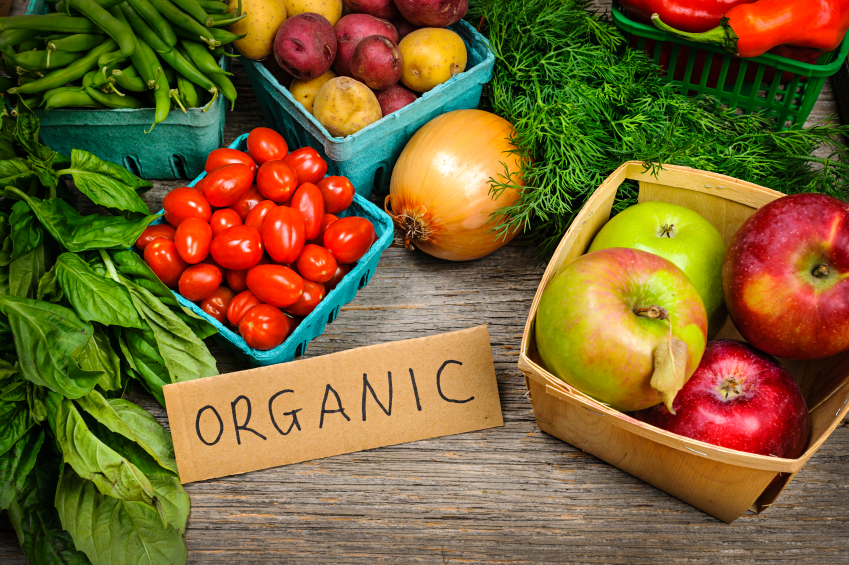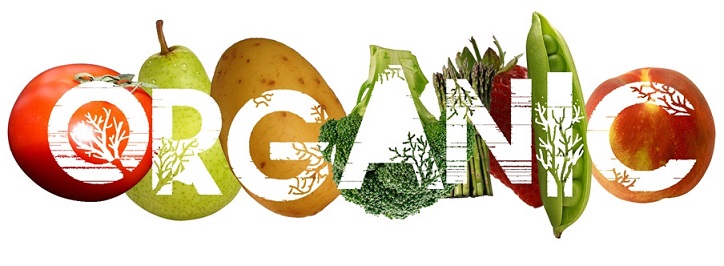US organic food sales on the rise
Organic Market Overview

According to the Organic Trade Association, organic sales in the U.S. totaled around $47 billion in 2016, reflecting new sales of almost $3.7 billion from the previous year, compared to the stagnant 0.6 % growth rate in the overall food market. Organic food now accounts for 5.3 % of total food sales in the country.
While demand for organic products continues to grow, supply is currently lagging. Organic grain-based food producers, for example, are scrambling to keep up with consumer demand, which approached $1 billion in 2016, according to Nielsen.
Reasons people turn to organic food
Organic agriculture is  monitored and certified by the U.S. Department of Agriculture and must adhere to strict regulations to be certified as “organic.” Organic food is free of man-made additions like antibiotics, and organic farming is supposed to be better for the environment than traditional farming. Organic foods often cost more than non-organic foods, which could keep some Americans from including them in their diets.
monitored and certified by the U.S. Department of Agriculture and must adhere to strict regulations to be certified as “organic.” Organic food is free of man-made additions like antibiotics, and organic farming is supposed to be better for the environment than traditional farming. Organic foods often cost more than non-organic foods, which could keep some Americans from including them in their diets.
According to the Organic Consumers Association, the No. 1 reason people go organic, is to avoid pesticides, chemicals and all of those things that are not allowed in organics.
Three-quarters (76%) of U.S. adults who bought organic foods in the past month say they were looking for healthier foods. Fewer organic food consumers (33%) say that helping the environment or convenience (22%) were reasons for buying organic.
Organic products US consumers buy
Americans are eating more organic fruits and vegetables than ever before, from organic blueberries and organic apples to organic packaged greens and cut-up organic vegetables ready for their children’s lunch box or their family’s dinner plate. Following, are the products that have the largest demand in the US:
- Organic bananas: 33% increase on sales from the previous year
- Organic blackberries: 61% sales increase from the previous year
- Organic salad greens and organic baby carrots: Sales of each up to 11% comparing to the previous year
- Organic Pink Lady Apples: Sales almost double (up to 96%) than a year ago
Meat and poultry is another segment showing strong consumer demand for organic. Sales of organic meat and poultry grew more than 17 % to $991 million last year, marking the category’s biggest yearly gain. Significant increase in sales was recorded as well in dairy products (15%), beverages (11%), bread/grains (11%), and snack food (5%).
How do Americans’ food and eating orientations play out in the grocery aisles?
People’s food philosophies are also closely connected to purchases of organic foods and foods labeled GMO-free. People who care a great deal about the issue of GM foods are particularly likely to have bought organic foods and foods labeled GMO-free in the past month. Similarly, people focused on eating healthy and nutritious are more likely than those who are not at all or not too focused on eating healthy and nutritious to have purchased organic foods at least once in the past month and to have bought food labeled GMO-free.
The 73% of Americans say that they bought locally grown fruits and vegetables in the past month.  A similar share (71%) made purchasing decisions based on nutrition and ingredients labels. And, 68% of Americans bought organic foods of some kind, whether produce, meat, fish, grains or packaged foods.
A similar share (71%) made purchasing decisions based on nutrition and ingredients labels. And, 68% of Americans bought organic foods of some kind, whether produce, meat, fish, grains or packaged foods.
44% of the consumers say that they bought food labeled as having no genetically modified organisms (GMO) – or GMO-free. About a quarter (28%) say they did not do this and another 27% are not sure if they bought GMO-free food in the past month. (Note that references to GM, genetically engineered and GMO foods are synonymous in this report.)
Younger Americans More Likely Than Older to Eat Organic Foods
More than half of 18- to 29-year-old Americans actively try to include organic foods in their diets, compared with one-third of Americans who are 65 and older. Older Americans are slightly more likely than other age groups to “think either way” about organic foods.
The West leads the way
In the U.S., inclusion of organic foods is highest in the West (54%) and lowest in the East (39%). Americans who report living in a big or small city are more likely to eat organic foods than those who describe their location as a town or rural area, 50% versus 37%, respectively, while those who live in suburban areas fall between these two groups.
Organic food in the US is sold to consumers through three main venues: conventional grocery stores, natural food stores, and direct-to-consumer markets. Most organic sales (93 %) take place through conventional and natural food supermarkets and chains, according to the Organic Trade Association (OTA). OTA estimates the remaining 7 % of U.S. organic food sales occur through farmers’ markets, foodservice, and marketing channels other than retail stores. One of the most striking differences between conventional and organic food marketing is the use of direct markets
Implications
 Given that almost half of Americans actively try to include organic foods in their diets, they may view the benefits of organic foods as greater than their downsides. Income and location appear to be factors in preference for organic foods, although that may be changing. Wal-Mart, the largest retailer and grocer in the U.S., known for its low-price business strategy, has announced plans to begin selling organic food.
Given that almost half of Americans actively try to include organic foods in their diets, they may view the benefits of organic foods as greater than their downsides. Income and location appear to be factors in preference for organic foods, although that may be changing. Wal-Mart, the largest retailer and grocer in the U.S., known for its low-price business strategy, has announced plans to begin selling organic food.
Even frequent consumers of organic foods say they are cost sensitive. About two-thirds (65%) of people who eat more organic foods say the comparative cost of organic foods factors into their purchasing decisions, as do 79% of people who eat less organic foods.
Availability could also affect how often people buy organic foods. One-third of Americans say that it is very easy to find organic foods in their local communities. Another 48% indicate that they are easy to find. A minority, 18%, say organic foods are hard or very hard to find in their local communities. Americans living in rural areas are less likely than those in urban or suburban areas to say that organic foods are very easy to find. But overall, 66% of rural-dwelling Americans say it is easy or very easy to find organic foods in their communities. This compares with 84% of those in urban areas and 85% of those in suburban areas
Conclusion
Organic products are now available in nearly 20,000 natural food stores and nearly 3 out of 4 conventional grocery stores. It is predicted that soon they will become more accessible and affordable, and this in turn could encourage more Americans to include them in their diets. Organic agriculture is sure to keep growing for years to come. And even if the health benefits of eating organic aren’t significant, the environmental advantages of organic agriculture—which are, of course, also public health advantages—make the practice well worth supporting.
This article was exclusively written by DK Consultants for the AMCHAM newsletter.
